
Australia So Much to See

Where can I fly my drone?
• Where there is no unreasonable risk of:
• Injury to Persons, or
• Damage to Property.
• Up to 120 metres above ground level
• Greater than 5.5 kilometres from an Aerodrome or Helicopter Landing Site.
• Outside of Restricted/Prohibited Airspace (e.g. Amberley Military Zone)
• In Good Weather Conditions
• When you can remain 30 metres from other people or property not involved in the operation.
What is commonly known as a drone is a small remote controlled quad-copter # with a built in camera.
Hobby drones and hobby model aircraft come under the same Civil Aviation Safety Authority (CASA) regulations. CASA refers to these as RPAs (Remotely Piloted Aircraft). These and model aircraft are also called Unmanned Aerial Vehicles (UAVs). # Alternative models now available may have between three and eight motors and rotors.
For the purposes this article, a hobby drone is a lightweight RPA which weighs less than two kilograms, and used for recreational purposes only.
• You should only fly a model aircraft in visual line-of-sight, in day visual meteorological conditions (VMC). What does that mean?
• no night flying
• no flying in or through cloud or fog, and
• you should be able to see the aircraft with your own eyes (rather than through its point-of-view camera) at all times
• You must not fly a model aircraft closer than 30 metres to vehicles, boats, buildings or people.
• You must not fly a model aircraft over populous areas such as beaches, other people's backyards, heavily populated parks, or sports ovals where there is a game in progress.
• In controlled airspace, which covers most Australian cities, model aircraft must not be flown higher than 400 feet (120 metres)
• You should not fly closer than 5.5 kilometres from an airfield #.
Temporary no-fly zones can be declared for events, such as the Commonwealth Games in Queensland 25th March to 18th April 2018. Full details
# This includes airfield, airport, seaplanes taking off or landing, helicopter landing sites which may be located at hospitals, police stations or other locations.
Additionally
• A person must not, in a Commonwealth reserve: Cause a remotely controlled device to be flown or operated. For example, you cannot use your drone in or over a National Park. Extract from Australian Government ComLaw
CASA also reminds us that:
• The privacy of other people should be respected by not flying near homes and backyards.
• Never fly a drone in an active bushfire area as there is a real risk of a mid-air collision with a fire fighting aircraft, which could cause an accident. Fire fighting aircraft will be grounded if a drone is conducting unauthorised flights on a fire ground, hampering work to control the fire and putting people and property at risk.
• Drones should also be kept away from police operations, accident scenes, building fires and rescue operations.
From Aerial Hot Shots
Remember, you must not operate your RPA in a way that creates
a hazard to another aircraft,
person or property.
Several Councils in Australia have outlawed drones flying over parks, beaches and back yards in their council area.
On Saturday 22 March 2014, a rescue helicopter in Newcastle, New South Wales was forced to take evasive action to avoid colliding with an RPA (Remotely Piloted Aircraft). At approximately 10 pm, while returning to base after delivering a patient to the John Hunter Hospital, the helicopter’s crew saw lights at about 300 metres above ground. The crew initially thought the lights belonged to a larger aircraft in the distance, but soon realized the object was an RPA, much closer than they had thought, and took evasive action to avoid it. Mr Glenn Ramplin from the Rescue Helicopter service said the results of a collision with the RPA could have been very serious, as the incident occurred over a residential area: ‘Even things like birds can damage an aircraft so to run into the UAV (unmanned aerial vehicle) or the RPA (Remotely Piloted Aircraft) if you will, you know, that could have been catastrophic.’ CASA regulations forbid recreational RPA users from sending their craft higher than 120 metres, or from flying RPAs over populous areas. They also forbid RPA operators from flying them within 5.5 kilometres of an aerodrome. The operator of the RPA has not been identified. From Eyes in the Sky.
Australian Airports Association CEO Caroline Wilkie at the time cited several near-miss incidents with UAVs - including in Western Australia, NSW, and Victoria - that she said could have had "catastrophic consequences”. Extract from IT News article which is no longer available.
Using Drones and other Gadgets in National Parks or over any Commonwealth
reserves. We live in a time of rapid technological advancement, and with this can come a lot of fun doodads and gadgets. However,
it is important to note that not all of these toys are allowed in Parks. Under the Environment Protection and Biodiversity Conservation
Regulations 2000 (Reg 12.27), remote control devices, including planes, cars and drones, are not permitted in any Commonwealth reserve.
In fact, anyone who uses these types of devices in Kakadu can be subjected to criminal fines of $1,700. From Parks Australia. Commercial
operators may be able to obtain authorisation to use an RPA.
Looking to the future - see updates
In the Australian Law Reform Commission’s report ‘Serious Invasions of Privacy in the Digital Era’ tabled in September 2014, it recommended the enactment of a new statutory cause of action for serious invasions of privacy. Such a new action could potentially apply to private UAV pilots if they recorded an individual in circumstances where the individual would have a reasonable expectation of privacy. This may assist individuals to take action against neighbours and unscrupulous operators who use UAVs in a manner that invades their privacy.
While CASA is in the process of amending the regulation of UAVs to come
into force 29th September 2016, it has indicated that the privacy issues associated with UAVs are beyond its remit. The new regulations
will need to carefully balanced the interests of ensuring its citizens are appropriately protected whist minimising “red tape” in
order to encourage growth and investment in this emerging sector. Extract from IT News article which is no longer available.
For those who already have a drone, use it within the rules and guidelines so you can safely record overviews of where you are touring to keep as a photographic record of your trip, or to share with others. This will be with minimal risk to yourself (of being fined for breeches) and to others should the drone crash and hurt an innocent person or people, or loss of your drone through a crash. As more travellers use them, air space over key sights may become busy and with no “traffic rules” a bit of common sense and a lot of courtesy will be needed.
What can go wrong? Have people been fined for operating a drone where not permitted?
Yes, there have been a number of incidents and accidents which have resulted in the private individual operator being fined. Fines for recreational drone users can range to $26,640. See CASA Enforcement and Penalties.
One Queensland drone pilot found this out the hard way
in 2012, receiving an $850 fine for his drone use based on videos he had uploaded to YouTube. Queensland man fined for flying
Drone.
On 2 October 2013, an Unmanned Aerial Vehicle (UAV) filmed its collision with the Sydney Harbour Bridge and was found the following day. CASA, naturally, took this event very seriously and initially alerted Counter-Terrorism officers. Police later determined the RPA (Remotely Piloted Aircraft) was being used recreationally by Mr Edward Prescott. Mr Prescott said that he did not fly that close the bridge intentionally. Mr Prescott was fined $850 as a result of the incident.
As a safety precaution, CASA advises that RPA should not be operated within 30 metres of people and away from large structures like bridges, buildings, and crowds. CASA also suggests that owners should always contact the local City or Shire Council to question what airspace is available or allowed to fly in. In the Sydney Harbour Bridge case, the airspace around the bridge was restricted for all aircraft, including light aircraft. See Drone Collides with Sydney Harbour Bridge.
On 6 April 2014, a triathlete was allegedly struck by an RPA (Remotely Piloted Aircraft) while competing in a race in Geraldton, Western Australia. The RPA was being used to take footage of the competition. Triathlete Raija Ogden was treated for head injuries by paramedics at the scene of the race before being taken to hospital in a stable condition. The RPA operator lost control of the vehicle and it dropped 10 metres at which point, according to Mrs Ogden, it struck her in the head. The RPA operator, Mr Warren Abrams, claimed that the vehicle crashed near Ms Ogden, startling her and causing her to fall. He said that his initial investigation indicated that control over the RPA was hijacked by someone nearby using a technique Mr Abrams referred to as ‘channel hopping’. CASA regulations specify that RPA operators must ensure that their vehicles remain more than 30 metres away from people not directly involved in using the craft. CASA referred the matter to the Commonwealth Director of Public Prosecutions (DPP) in June 2014. The DPP will determine whether Mr Abrams will face prosecution. See Drone Strikes Triathlete.
Can I fly over private land?
As RPAs (drones) are new technology, there is some uncertainty as to when the flying of a RPA over private property without permission will amount to a trespass to land.
A trespass to land is an interference with land owners’ rights. Land owners’ rights extend to the airspace over their land to a reasonable height.
There is no clear guidance on the height a RPA needs to be flown to avoid trespassing on private land. Based on past cases that have dealt with aerial photography from planes, scenic helicopter rides, and the height that bullets can be shot across land – as long as the RPAs are flown over land quickly and at a height that does not detract from the land owner’s use and enjoyment of their property, there is no trespass to land.
Please be aware that farm or pastoral station livestock can be startled by a drone even from some distance away.
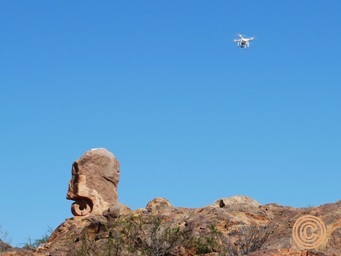
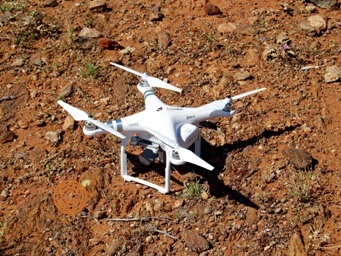
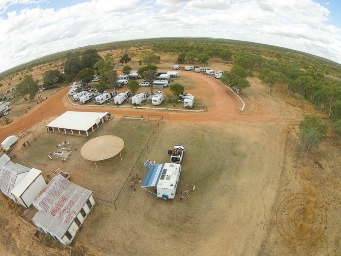
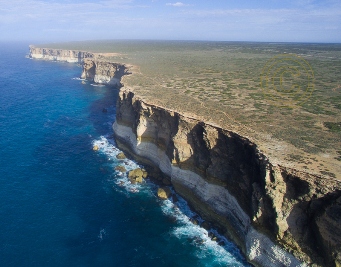
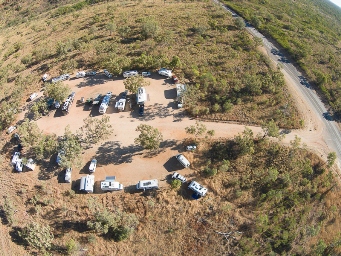
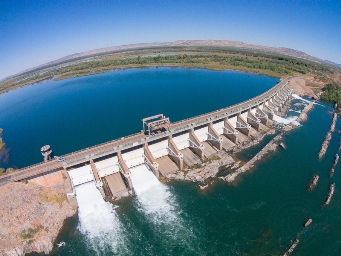
Will the Privacy Act apply to video footage taken by a drone?
The Privacy Act 1988 (Cth) only applies to Commonwealth agencies
and organisations with an annual turnover of more than $3 million (with certain exceptions). Private UAV pilots and small companies
(such as technology start-ups) would generally not be subject to the Privacy Act. Sourced from Regulation of Drones in Australia.
An unfortunate incident involved a woman sunbathing in her back yard was captured in a photograph of a neighbouring property and used on a billboard by a real estate company, as well as in their magazine and internet listings for the property. The lady said she had heard a buzzing noise that she thought was "a kid's toy". Although the offending billboard was removed, the photographs and the story remain on many internet sources.
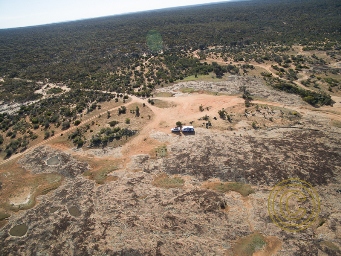
The Leichhardt Municipal Council in inner western Sydney voted to prohibit the launching of drones in public parks and playgrounds within its local government area in December 2015, becoming the first council in Australia and only the second in the world (after Chicago USA) to ban the use of drones over public land in its area.
Leichhardt Mayor Darcy Byrne said the proliferation of drones for personal use and photography warranted greater regulation to ensure public safety and privacy. “There is a concern about people taking unauthorised photos of children in public areas as well as the risk of injury if a drone crashes” Mayor Byrne stated.
The council voted to ban the use of private drones and unmanned aerial devices in all parks and open areas under its care, control and management. From Daily Telegraph and Aus Leisure.
In the Perth Town of Cambridge, beaches, parks and backyards may become drone no-fly zones if councillors at the Town of Cambridge vote to ground the remote aircraft at a council meeting on Tuesday 23rd February 2016. From WA Today.